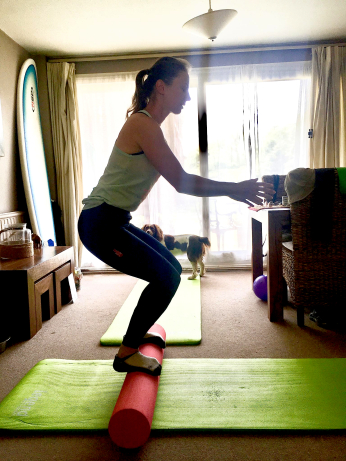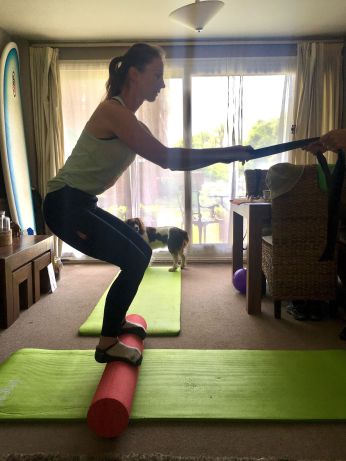A couple of exercise routines that can transform your riding feel
- Wiola Grabowska

- Sep 28, 2018
- 3 min read
Even though I am a big fan of off-horse training to improve riding feel (via a better i.e. more aware use of the rider’s body) and I have participated in various sports since childhood, it wasn’t until my late thirties that I actually felt it to be a necessary rather than a complimentary part of riding training.
Let me share a couple of routines from my Equestrian Pilates sessions with Natalie Monrowe that are really fun to try and play with :)
LYING DOWN ON A ROLLER

I found it useful for:
finding “neutral spine” which is a must for upper body control in the saddle. Many grassroots riders ride on horses with a “hollow back”. This often can give a feeling of sitting in a hammock which sends the rider’s lower leg forwards and shifts the overall weight of the rider behind the movement of the horse. This can be very slight and make consistent throughness tricky or be very obvious, like getting left behind in rising trot and ‘double bouncing’. Developing a good feel for own neutral spine can help the rider develop the same in their horses.

pelvis stability. Lifting alternate legs shows various weaknesses in the use of core muscles which can be worked on separately.
neck and head alignment. Riders often struggle with their neck alignment (head down, too much left or right, straining neck forward etc) and I find this to be a very simple way to gather proprioception for the spinal alignment throughout entire spine (base of the neck to tailbone)
awareness of own straightness. Aligning the roller with own spine gives a very distinct feel of how much of each side of ribcage, shoulders, pelvis is on each side of it. Just lying down in this position for some time increases awareness of where your centre is and that is such an important skill to have when schooling horses of any level. Ability to maintain own straightness on a crooked horse in order to help them move better is the key not only to effectiveness but also to injury prevention (in both horse and rider)

JUMPING POSITION ON A ROLLER
I found it useful for:
Balance. As the roller moves a little it creates a situation in which we practice stability via mobility and that replicates the balance skills needed for riding. Standing on the floor is not quite cutting to the chase.
Awareness of weight distribution forward and back, left and right. One sided weaknesses have a strong voice in this exercise and provide a very good feedback to the rider
Independence of hand. Moving your arms in various directions without that movement affecting stability of the rest of the “seat” is important for jumping but also, in a miniature version of it – for all rein aids. Without suppleness in the arms it is very difficult to give supple rein influence. Many riders think they aren’t using reins for balance but it can be a real eye opener when you try to ride some movements without the reins. This allows you to check how much effectiveness there really is in the seat, how much we want to rely on the reins for corrections that ideally should be delegated to the seat aids and how switched on the horse is to the seat vs reins. Rein influence is important for overall connection but the less of it there is the more we can wake up our own seat aids. The more attentive the horse becomes to the seat, the more influence we have on small adjustments.
I do believe that the minute we sit on a horse for a purpose other than travel, we are training. No matter if it’s learning to do rising trot for the first time or polishing details of canter pirouettes. We are training our bodies so they are not a burden to the horse’s movement. A few minutes a day can transform that training :)
Many thanks to Boudica Equestrian for my fab “yard to gym” leggings!









Comments